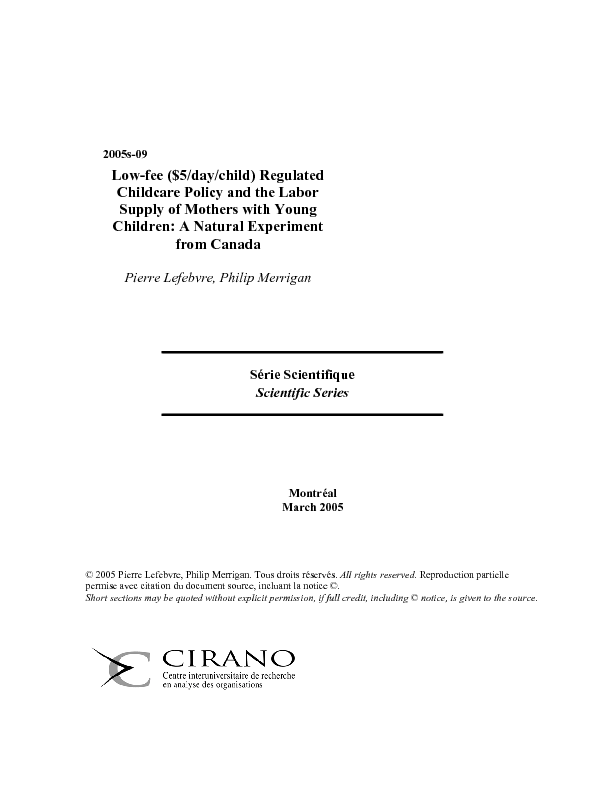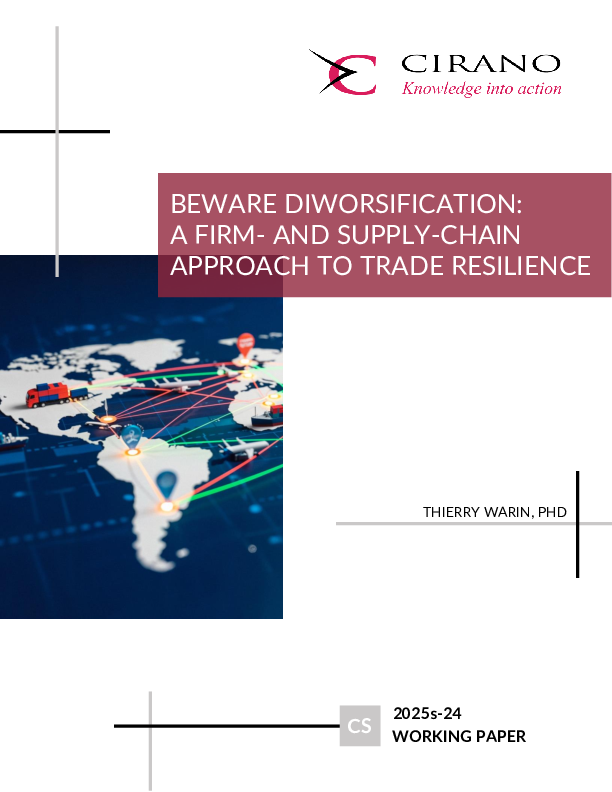Low-fee ($5/day/child) Regulated Childcare Policy and the Labor Supply of Mothers with Young Children: A Natural Experiment from Canada
On September 1st, 1997, a new childcare policy was initiated by the provincial government of Québec in Canada. Childcare services licensed by the Ministry of the Family (not-for-profit centre, family-based, and for-profit centre under the agreement) began offering daycare spaces at the reduced parental contribution of $5 per day per child for children of age 4. For each following year, the government reduced the age requirement and engaged in a plan to create new childcare facilities and pay for the cost of additional $5 per day daycare spaces. On September 2000, the low-fee policy applied to all children aged 0-59 months (not in kindergarten) and the number of subsidized places increased from 82,000 in 1997 to 163,000 by the end of year 2002, while the number of eligible children, zero to four years old, declined from 445,000 to 373,000 over the same period. Using annual data (1993 to 2002), drawn from Statistics Canada's Survey on Labour and Income Dynamics (SLID), this study attempts to estimate the effect of the policy on the labour supply behaviour of Québec mothers with pre-school children, aged from 0 to 5 years old. The analysis examines the impact of the policy on the following outcomes: labour force participation, number of annual weeks and hours worked, annual earned income and whether the job was full-time or part-time for mothers who declared having a job during the reference year. A non-experimental evaluation framework based on multiple pre- and post-treatment periods is used to estimate the effect of the childcare regime.
[ - ]
The econometric results support the hypothesis that the childcare policy, simultaneously with the transformation of public kindergarten from a part-time to a full-time basis, had a large and statistically significant impact on the labour supply of Québec's mothers with pre-school children. The estimates also suggest, though less convincingly, that the size of the impact increased simultaneously with the positive growth in the number of low-fee spaces.




